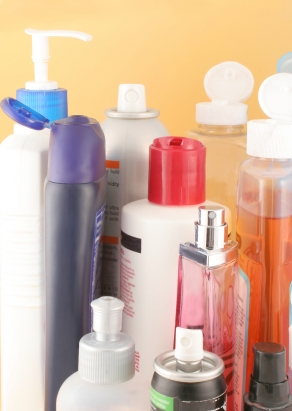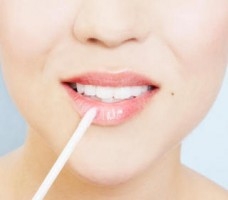
“Dangerously” Good Looking: Why Personal Care Products Can Be Harmful
The average Canadian has a rigorous morning routine – we scrub, brush, paint, and spray with reckless abandon, all in an effort to "look our best" for the coming day. In our day-to-day life we are exposed to a multitude of choices in personal care products, including toothpaste, shampoo, deodorant, moisturizer, shaving cream, make-up products, and perfumes and colognes. In our efforts to make ourselves look, smell, and perhaps most importantly, feel beautiful or handsome, we often overlook our cosmetics and personal care products as a source of pollution to both our bodies and the environment. In fact, when you think of sources of pollution, the last thing to come to mind is face wash or deodorant. But the reality is, sometimes the chemicals in these products are far from pretty.
There are thousands of industrial chemicals being used in personal care products, many of which are toxic. A typical Canadian may use up to 10 products a day, slathering on an average of more than 100 chemicals in just twenty-four hours. In that most of these chemicals are not being tested by either the Canadian Food Inspection Agency or Health Canada, it is impossible to have peace of mind regarding the real effects. Even though these chemicals are in small doses, we are using them on a daily basis, and they are in direct contact with our skin. Chemicals found in these products that we are consistently exposed to, include, but are not limited to, pesticides, carcinogens, and hormone and endocrine disruptors.

You're probably asking yourself, what can I do as a consumer? Spending more money on seemingly 'higher end' products is not the answer. Harmful toxins are found in both low-end and high-end products. It is up to you to be a savvy consumer and investigate exactly what is in the products you buy. Don't assume the government or other regulatory bodies will do the research for you. While Canada does have a 'hot list' of harmful chemicals, it is small (especially compared to Europe), and often regulatory bodies are slow to act (take banning BPA, for example). Personal care product companies can use any ingredient or raw material they desire, except those on that small 'hot list'. Fortunately, with a bit of research, you can be an informed consumer. Check out websites such as the Guide to Less Toxic Products (www.lesstoxicguide.ca), or cosmetics database Skin Deep (www.ewg.org/skindeep).

Of course it would be time-consuming (and unrealistic) to investigate every single suspect product ingredient. Luckily, Canadian environmentalist David Suzuki has created a list of the 'Dirty Dozen' — twelve culprit chemicals commonly found in day-to-day products that you should avoid at all costs. Checking your bathroom cupboards and properly disposing of products with these chemical ingredients is a step in the right direction: BHA and BHT; coal tar dyes; DEA-related materials; dibutyl phthalate; formaldehyde-releasing preservatives; parabens; parfum; PEG compounds; petrolatum; siloxanes; sodium laureth sulfate; and triclosan.
Every time you purchase products that don't contain the 'Dirty Dozen', or any harmful toxin for that matter, you are voting with your dollar. Get smart – read about the issue, tell others, and spread the word. Together we can change both how Health Canada labels cosmetics and personal care products, and also call for the removal or substitution of harmful toxins. If beauty is skin-deep, I'd like my skin to be as toxic-free as possible. How about you?












